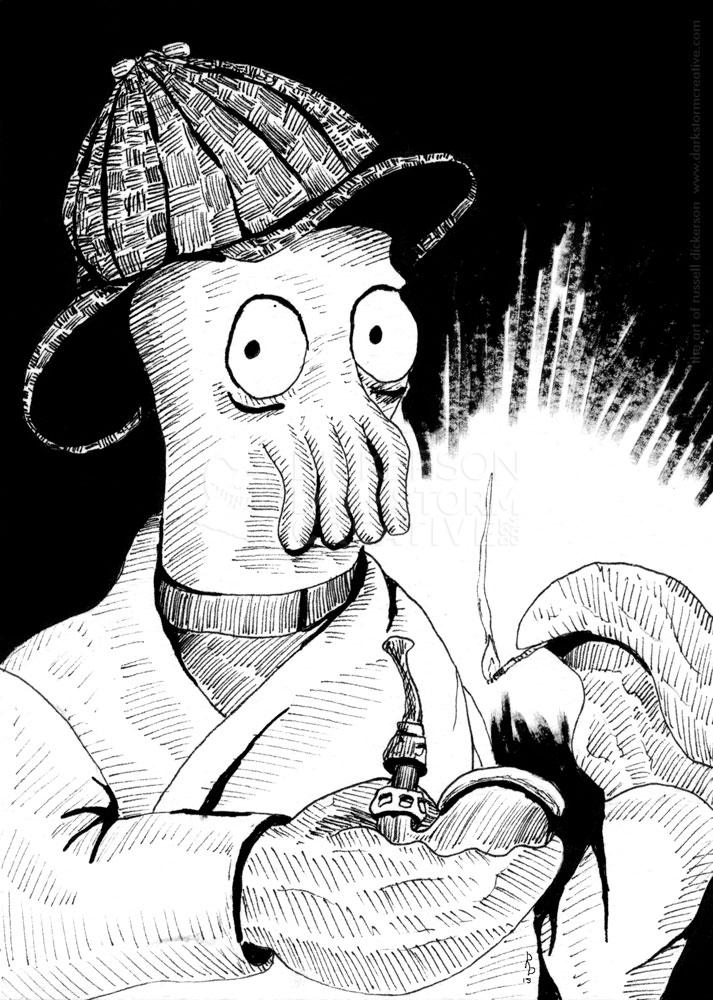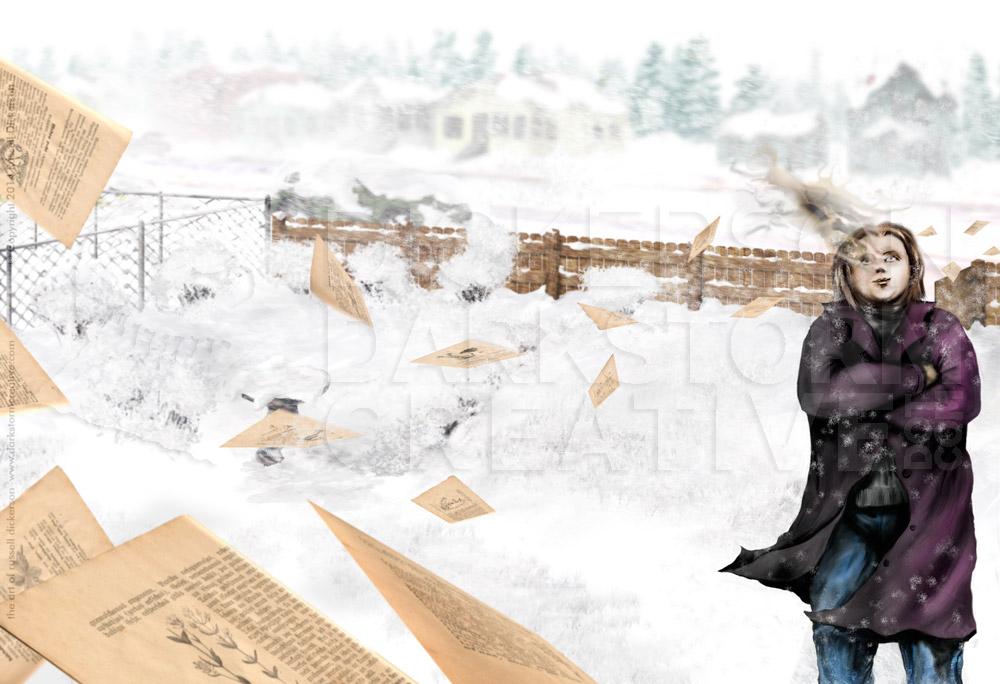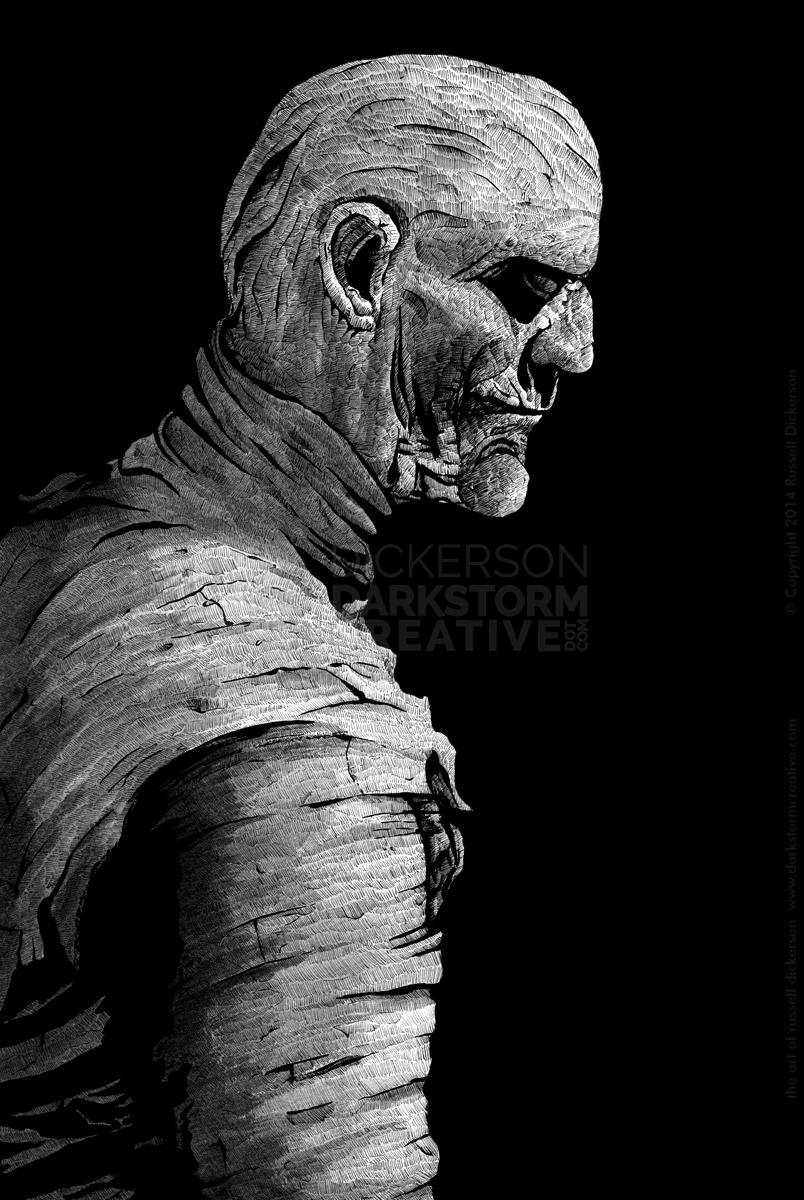Some time ago, I discussed the genesis of the cover art that I created for Maelstrom’s edition of author Brian Keene’s A Gathering of Crows (check it out here!). For that article, I talked about the content of the art, what it meant for the book, and in general the idea behind what’s going on in the image.
But I didn’t really talk about the design part of it.
Now, I know what you might say. Russ, you’re an artist, not a designer. But the truth is I’ve been a graphic designer for just as long as I’ve been an artist. To do cover art for books I think you have to be both, to understand not just the creative side but the technical as well.
I would imagine there are plenty of great pieces of art out there that wouldn’t work for covers simply because they didn’t have the design and production in mind. Maybe it wasn’t scanned in right, or maybe it’s the wrong resolution. Maybe the proportions aren’t even close to publication size. It could be something minor, or it could be a deal breaker.
When I do cover art, without us discussing the look and feel for it as we did in the other article, I start with the simple ideas. What dimensions do they need? Is it just a front cover, or do they need the full wraparound cover? What final resolution, format, and dimensions does the final product need to be in?
In this day and age, it also pays to know how it will be seen. Will it primarily only be on store shelves? Is it mass market, or is it a limited edition that’s sold out? Will it need to be recognized as easily as a tiny thumbnail as a full size, printed dustjacket?
Let’s start easy: The initial sketches. Sometimes the publisher knows just what they want, sometimes not. The best way to start sometimes is just to throw out some art and see what happens. Here’s the first attempts at the crows cover, ignoring the book flaps for now:
Now, it’s fairly obvious that from the start I was pushing for the evil, smiling revenant on the back. I thought it represented quite well the darkness of the characters, and their, shall we say, “unique” abilities (I won’t spoil it). We started with the main character on the right, Levi, merely standing there.
After some thought though, we wanted Levi to have a bit more action. But we liked the “yin-yang” effect of the high contrast look, and wanted to keep it. Levi almost had too much action here, almost looking afraid, and that didn’t quite fit the character well. So we modified it in the next round.
These initial sketches helped us figure out the basic composition, and not just from a creative standpoint. When you are designing a cover, you can have the most kick ass image in all the world. But the cover will fail if you don’t take into account all the other design that goes into it.
There are sometimes UPC symbols for sales. There are company logos. There’s the title of the book and the author’s name on the front, and on the spine. There’s often text on the book flaps, sometimes even an author photo, bio, and more logos.
It’s not just the art that you think about. You have to take this all into account at the sketch stage so that it all works out in the end. You don’t want to get all the way to the end, finishing up your beautiful work, only to figure out that it will never work as a cover.
That’s between you and the publisher, and you need to have it hashed out near the beginning before you even get moving. Sure, sketches are fine, that helps you establish where you both think things should go. I even will sometimes throw in dummy text (seen above) so that we all know where it might end up.
It’s only then that you really start the final artwork.
When I’m working on art, I see two different running versions in my head, and with all the guides I set up onscreen (digital art, remember?). I see the actual art, usually as the scene is playing in my head and getting twisted at all angles. I also see the technical side, which looks like this:
I truly see both of them at once, and to keep things on track I think an artist must. Sometimes it’s a line only in my head, that I know things are going on at certain spots. Other times, the guidelines all stay in place, and I create under them. That way I can keep in mind where the art will be trimmed at, where I need to stay away from folds, how things are lining up on a front cover versus a spine, and so forth.
After toying with the sketch more, maybe adding some color to large areas, and so forth (also known as “dicking around”), I can work the sketch over into the final artwork. Here’s what they look like together:
Once I reach a point that I think it’s done, I send it over to the publisher. When it comes down to it, at the very bottom line, they are the only opinion that matters. Sure, I want to look at the art and think I’ve done well. I want the author to love it, and the fans as well. But at the end of the day, it’s the publisher that pays the bills, and they are who I need to impress the most.
Once they don’t hate it as much as I thought, and they approve it, I can send them the final files. Now, every publisher is different with their procedures, so I tend to give them several different versions to use as they will. A CMYK version for printing normally, as well as an RGB version so they can color correct it themselves as they need to (which is easier from RGB than CMYK). I make sure it’s sent as the right dimensions, cropped if needed, at the right resolution. I also try to make that before the deadline.
So, at the very end, I come out with a piece that I hope that I like, and that the publisher loves. Hopefully the author and the fans love it too, but ultimately that’s up to them.







